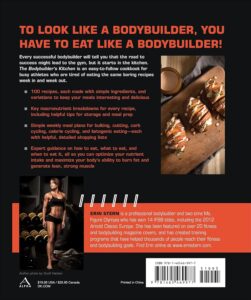In the world of bodybuilding, there’s a common belief that longer is better. Two-hour gym sessions, split routines spanning the entire week, and exhaustive sets that leave you crawling out of the gym have become the expected norm. But what if you’re short on time? Can you really build quality muscle in just 15 minutes?

The Science Behind Short-Duration Training
Before diving into the practical applications, let’s understand why brief, intense training sessions can be effective for hypertrophy (muscle growth):
Mechanical Tension
Research published in the Journal of Strength and Conditioning Research shows that mechanical tension—the force generated when muscles contract against resistance—is a primary driver of muscle growth. This tension can be created effectively in short bursts when intensity is appropriately high.
Metabolic Stress
When you train with minimal rest periods, as you would in a time-constrained workout, you create significant metabolic stress. This process triggers the release of growth factors, increases cellular swelling (the “pump”), and elevates anabolic hormone production—all crucial components for muscle synthesis.
Neural Activation
Short, focused sessions allow for maximum neural drive to specific muscle groups. This heightened neural activation means you can recruit more muscle fibers in less time, especially when using techniques like pre-exhaustion or post-activation potentiation.
Strategic Applications for 15-Minute Sessions
For bodybuilders, these abbreviated workouts serve specific purposes within a comprehensive training plan:
1. Single Muscle Group Focus
When you only have 15 minutes, attacking one muscle group with laser focus can be remarkably effective. This approach works particularly well for smaller muscle groups that might not receive enough attention in full-body sessions.
Example: Deltoid Specialization
- Lateral raises: 4 sets × 12-15 reps (30 seconds rest)
- Face pulls: 3 sets × 15-20 reps (30 seconds rest)
- Overhead press: 3 sets × 8-10 reps (45 seconds rest)
- Upright rows: 3 sets × 10-12 reps (30 seconds rest)
The concentrated workload creates substantial time-under-tension for the target muscles while avoiding the diminishing returns that can come with extended sessions.
2. Advanced Intensity Techniques
Bodybuilders are familiar with intensity-boosting methods, but these techniques truly shine in time-constrained scenarios:
Drop Sets
Start with a weight you can lift for 8-10 reps to failure, immediately reduce the weight by 20-30%, and continue to failure again. Repeat for 2-3 drops.
Example: Quad-Focused Drop Set Sequence
- Leg extensions: 3 triple-drop sets (reduce weight by 25% each drop)
- Sissy squats: 2 sets to absolute failure
- Walking lunges: 1 minute continuous movement
Rest-Pause Training
This technique involves taking minimal rest periods (10-15 seconds) between sets using the same weight, effectively turning one set into several mini-sets.
Example: Biceps Rest-Pause Protocol
- Select a weight you can lift for 8-10 reps
- Perform as many strict curls as possible
- Rest 15 seconds
- Repeat for 5-6 rounds
3. Density Training
Density training focuses on completing as much quality work as possible within a fixed timeframe. This approach creates a powerful growth stimulus through accumulated volume in minimal time.
Example: Chest Density Block
- Set a timer for 15 minutes
- Alternate between:
- Incline dumbbell press: 8-10 reps
- Push-ups: 12-15 reps
- Cable flyes: 12-15 reps
- Rest only as needed to maintain form
- Track total rounds completed
Each week, aim to complete more total rounds or increase the weight used while maintaining the same number of rounds.
4. Pre-Exhaustion and Supersets
When time is limited, pre-exhaustion techniques and supersets allow you to fatigue muscles more thoroughly than straight sets.
Example: Back Pre-Exhaustion
- Straight-arm pulldowns: 15 reps → immediately into
- Pull-ups: As many as possible (4 rounds, minimal rest)
- Single-arm rows: 12 reps per side → immediately into
- Deadstop rows: 8-10 reps (3 rounds, 45 seconds rest)
Optimizing Short Sessions
To maximize results from abbreviated training, you must dial in several key variables:
1. Preparation Is Non-Negotiable
With only 15 minutes to train, you can’t waste time warming up during your working window. Arrive at the gym with:
- Your cardiovascular system already primed (5 minutes of jumping jacks, jump rope, or light jogging before starting the clock)
- Joint mobility already addressed
- Equipment already set up or identified
- Workout planned down to the second
2. Tempo Manipulation
Controlling the tempo of each repetition allows you to increase time-under-tension without extending workout duration.
For example, a 4-1-2 tempo on bicep curls means:
- 4 seconds lowering the weight (eccentric phase)
- 1 second pause at the bottom
- 2 seconds raising the weight (concentric phase)
This approach can transform a set of 8 reps from a 16-second affair to a 56-second muscle-building marathon.
3. Strategic Rest Periods
In 15-minute sessions, rest periods must be precisely controlled:
- Compound movements: 45-60 seconds maximum
- Isolation exercises: 30 seconds maximum
- Supersetting antagonistic muscle groups: No rest between exercises, 45 seconds between rounds
Use a timer rather than relying on perception—studies show most lifters dramatically overestimate rest periods when not timing them.
15-Minute Sessions Within a Bodybuilding Split
For optimal results, integrate these abbreviated workouts strategically:
As Specialized Accessory Work
Add 15-minute targeted sessions at the end of primary workouts to address lagging areas:
Example: After a primary leg day:
- 15-minute hamstring specialization session 6-8 hours later
As Frequency Boosters
Short, focused sessions allow you to increase training frequency without overtraining:
Example: Traditional 4-day split plus frequency boosters:
- Day 1: Chest/Triceps (full session) + 15-minute rear delt finisher
- Day 2: Back/Biceps (full session) + 15-minute calf specialization
- Day 3: Rest
- Day 4: Shoulders/Abs (full session) + 15-minute triceps density training
- Day 5: Legs (full session) + 15-minute biceps ladder protocol
- Day 6: 15-minute chest pump session
- Day 7: Rest
During Deload Weeks
During planned recovery weeks, 15-minute sessions maintain muscle stimulation while allowing for enhanced recovery:
Example: Deload week with maintenance stimulation:
- 3-4 full-body, 15-minute sessions using 60-70% of normal working weights
Sample 15-Minute Specialist Protocols for Common Lagging Muscle Groups
Arms Blueprint: Biceps Focus
- EZ Bar Curl + Mechanical Drop Set (90 seconds)
- Standard grip to failure
- Immediately switch to wide grip to failure
- Immediately switch to narrow grip to failure
- Rest 45 seconds
- Incline Dumbbell Curl (60 seconds)
- 8 reps full range
- 8 reps bottom half only
- 8 reps top half only
- Rest 45 seconds
- Concentration Curl Triple Drop Set (90 seconds)
- Drop weight by 20% each time
- Rest 45 seconds
- Reverse Curl Finisher (60 seconds)
- Maximum reps in 60 seconds
- Repeat circuit if time permits
Back Width Specialist
- Wide Grip Pull-Up (or Lat Pulldown) + Mechanical Drop (2 minutes)
- Wide grip to failure
- Immediately switch to medium grip to failure
- Immediately switch to close grip to failure
- Rest 60 seconds
- Straight-Arm Pulldown Triple-Pause Sets (90 seconds)
- 8 reps with 3-second pause at maximum stretch
- Rest 45 seconds
- Single-Arm Machine Row (90 seconds)
- 10 reps per side, focusing on maximum contraction
- Rest 45 seconds
- Rope Pullovers (remainder of time)
- Maximum controlled reps until time expires
Shoulder Cap Builder
- Lateral Raise 21s (90 seconds)
- 7 partial reps (bottom half)
- 7 partial reps (top half)
- 7 full range reps
- Rest 45 seconds
- Seated Dumbbell Press (60 seconds)
- 10 reps with 2-second pause at bottom
- Rest 45 seconds
- Face Pull + External Rotation Combo (90 seconds)
- 12 face pulls
- Immediately into 12 external rotations
- Rest 45 seconds
- Upright Row Finisher (remainder of time)
- Maximum reps with strict form until time expires
Nutrition Considerations for Short-Duration Training
To support muscle growth from abbreviated training sessions:
- Pre-workout nutrition becomes even more critical—consume 20-30g of protein and 30-40g of fast-digesting carbohydrates 60-90 minutes before training
- Intra-workout EAAs or BCAAs can help maintain an anabolic environment during these intense sessions
- Post-workout carbohydrate timing should be immediate to capitalize on the heightened glucose sensitivity following these glycogen-depleting protocols
Quality Always Trumps Quantity
While traditional bodybuilding wisdom emphasizes volume and extended training sessions, the science clearly shows that quality stimulus is what truly matters for hypertrophy. These 15-minute protocols deliver precisely that—highly concentrated, effective training stimuli that trigger muscle growth.
For the bodybuilder with limited time, these methods aren’t just “better than nothing”—they’re legitimate tools for continued progress. By incorporating these strategic mini-sessions into your overall training approach, you can break plateaus, address weaknesses, and maintain consistency even during life’s busiest periods.
Remember: It’s not about how long you train—it’s about how effectively you train during the time you have.
Hey there! We hope you love our fitness programs and the products we recommend. Just so you know, Symku Blog is reader-supported. When you buy through links on our site, we may earn an affiliate commission at no extra cost to you. It helps us keep the lights on. Thanks.
Disclaimer: The information provided in this discussion is for general informational and educational purposes only. It is not intended as medical or professional advice. Only a qualified health professional can determine what practices are suitable for your individual needs and abilities.


